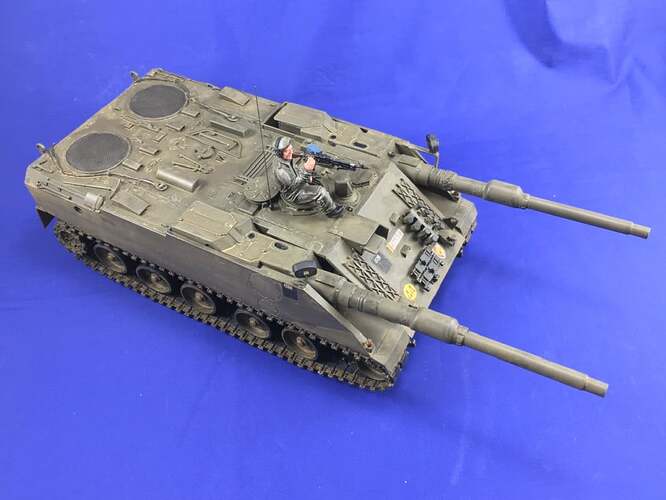To further muddy the waters, IMHO there are what-ifs and what-ifs ![]() A good deal of what-if models you see, are really, “What if I would stick together these semi-random parts I have?” but there are also what-ifs that are, “What if they had fully developed this prototype into a production vehicle?” or “What if they had stuck with this vehicle type instead of replacing it?” Call it soft and hard what-if.
A good deal of what-if models you see, are really, “What if I would stick together these semi-random parts I have?” but there are also what-ifs that are, “What if they had fully developed this prototype into a production vehicle?” or “What if they had stuck with this vehicle type instead of replacing it?” Call it soft and hard what-if.
Speaking for myself, I like hard what-if models, but not so much soft ones. To me, there has to be a plausible possibility for the vehicle to have existed as the model shows it. Sticking a modified turret from one tank onto the hull of another and grafting on a suspension from a third, simply makes no sense to me and I therefore wouldn’t build it except as a science-fiction model. OTOH, I do build things like these:
What if the M4A3 had been fitted with the T26 turret and used in the invasion of Japan in 1946?
What if the US Army had adopted the MBT 70, upgraded it in a few steps, and used it in the 1991 Gulf War?
What if the Versuchsträger 1-2 was meant as a prototype rather than to test an idea, and Belgium adopted it to replace its JPKs?
Trust me when I say that the first two of these required about as much research as a model of a real vehicle in order to make them plausible (not to mention for the second one: to correct all the stuff Dragon missed with their KPz 70 kit), while the third didn’t need research so much as a lot of thinking about how to realistically turn a test rig into a vehicle suitable for military use. IMnsHO this makes them “done right” rather than sloppily like you see too often for “hard” what-if models, because the builders didn’t do much or any research.


